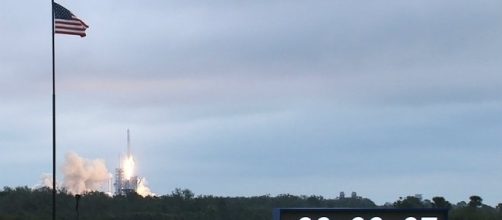Elon Musk and SpaceX made history this morning with the launch of a Dragon spacecraft from the NASA Kennedy Space Center in Florida. It represents the first time the storied facility was used for a commercial launch. The Kennedy Space Center launchpad 39A was last used in 2011 for the launch of Atlantis, at the end of NASA's space shuttle program. Today's first commercial run won't be its last, however, as the NASA facility is converted to a multipurpose commercial spaceport. Maintaining and using existing assets is another aspect of the ongoing collaborations between SpaceX and NASA.
The SpaceX Dragon launch
The launch comes a day after it was first scheduled. The original rocket launch planned for Saturday, February 18 was called off with just 13 seconds left on the clock because of irregular readings in a navigational component, a decision Elon Musk personally acknowledged in a Tweet.
The SpaceX Dragon cargo ship is headed for the ISS (International Space Station) where astronauts from the European Space Agency and NASA will essentially snag the spacecraft with a robotic arm to secure it. Equally as important as the successful lift off is the fact that the booster stage of the rocket was also recovered. As planned, the booster returned to land after the second stage rocket took over.
SpaceX successfully lands its first-stage Falcon 9 rocket at Cape Canaveral https://t.co/rw8K6kY7Gh by @romaindillet pic.twitter.com/RTIN3m0yTo
— TechCrunch (@TechCrunch) February 19, 2017
The successful launch is a timely one for SpaceX and Elon Musk after the disastrous explosion on the launchpad at nearby Cape Canaveral in September 2016.
NASA's cargo
The Dragon cargo ship is being used to transport about 5,500 pounds of materials and equipment that are essential to NASA experiments. The Sage 3 or Stratospheric Aerosol and Gas Experiment is part of an ongoing NASA Earth observation project. The SpaceX Dragon is carrying an instrument that will measure levels of ozone, aerosols, nitrogen dioxide, and water vapor in the atmosphere.
Another specialized instrument will track lightning strikes.
Right on schedule, solar arrays have been deployed on @SpaceX #Dragon cargo spacecraft. Watch: https://t.co/mzKW5uDsTi pic.twitter.com/NCqYrCNR7x
— NASA (@NASA) February 19, 2017
Another experiment the rocket is carrying to the International Space Station involves crystallizing a monoclonal antibody that researchers hope will be able to treat immunological conditions. The advantage of growing crystals in space comes from the lack of gravity -- on earth, their weight eventually causes crystals to collapse on themselves.
The next NASA-SpaceX collaboration, scheduled for later this year, is also set to be a first as the cargo mission reuses the capsule from an earlier launch.

